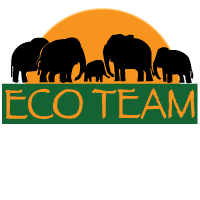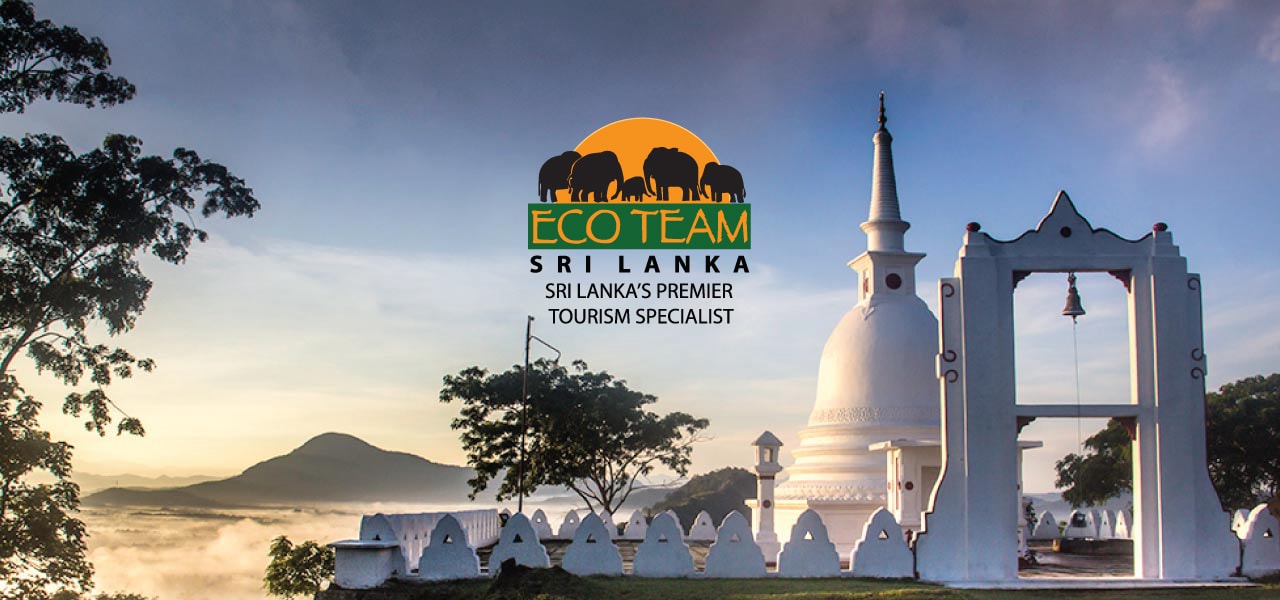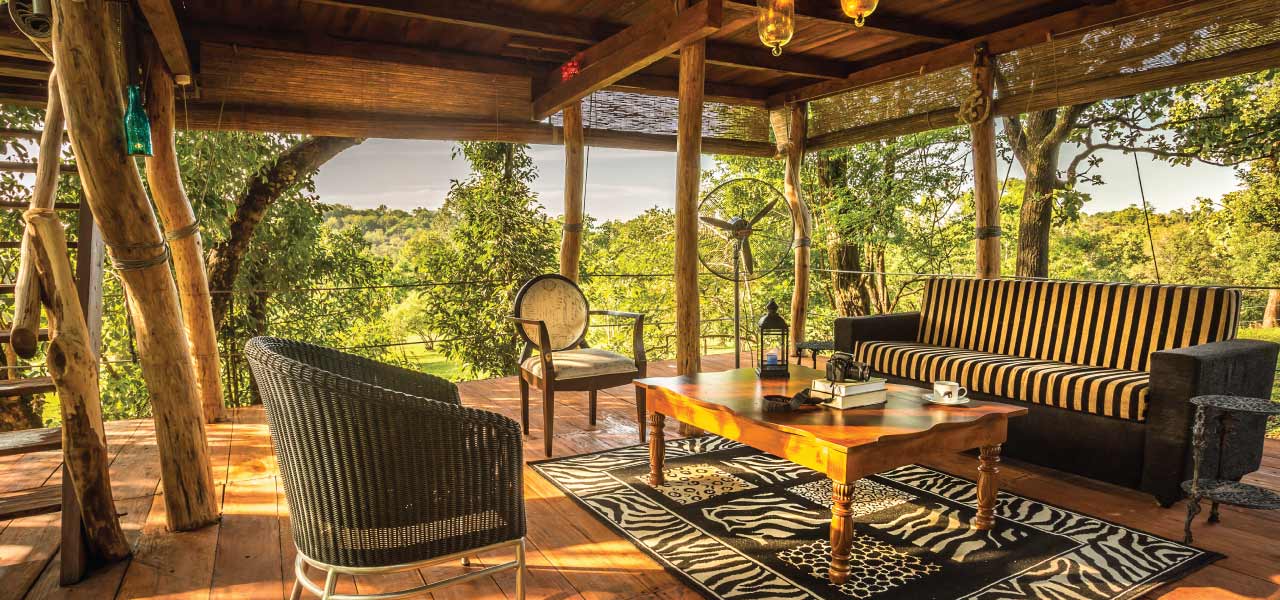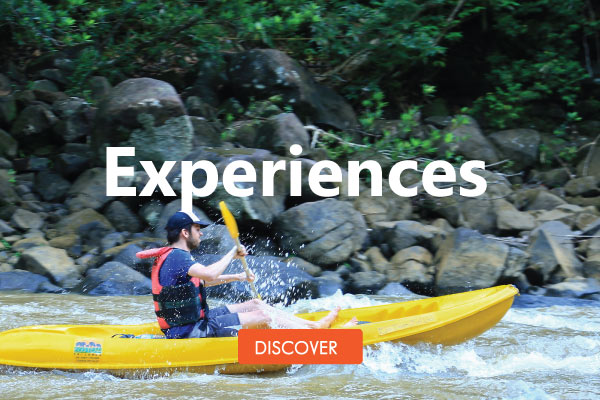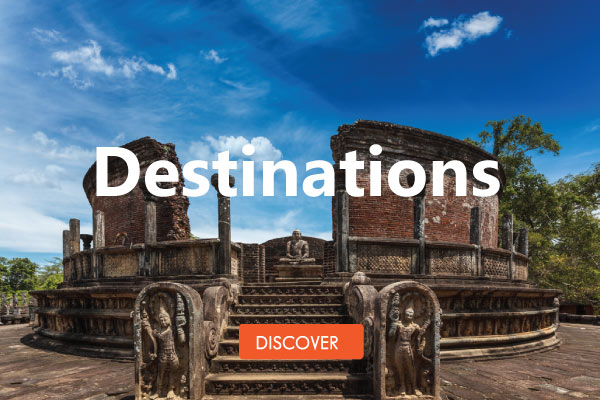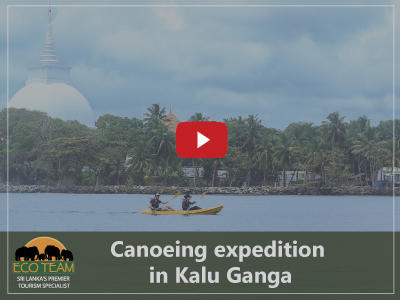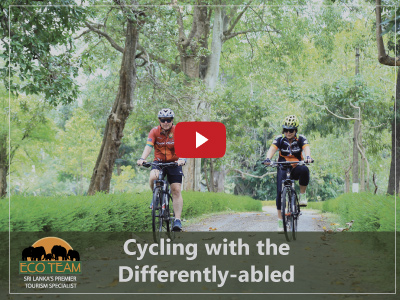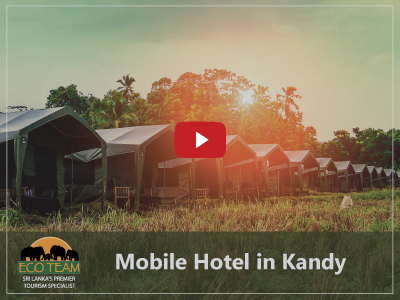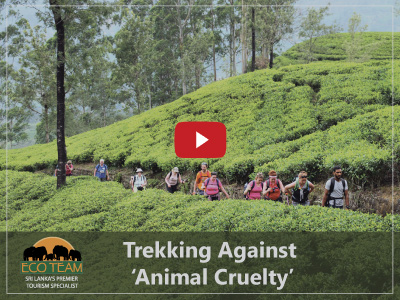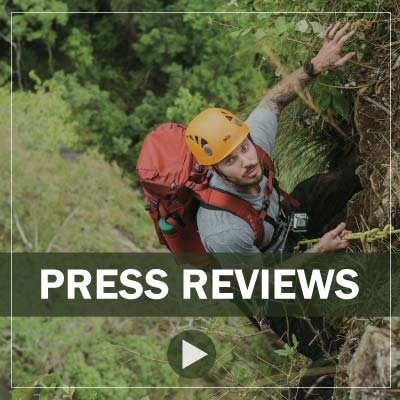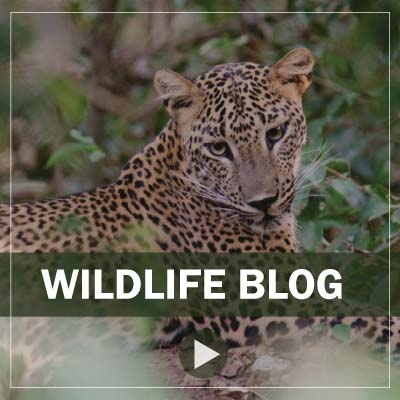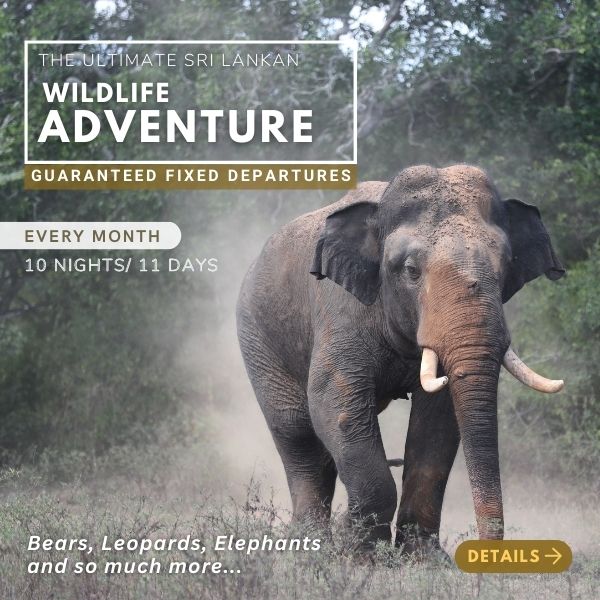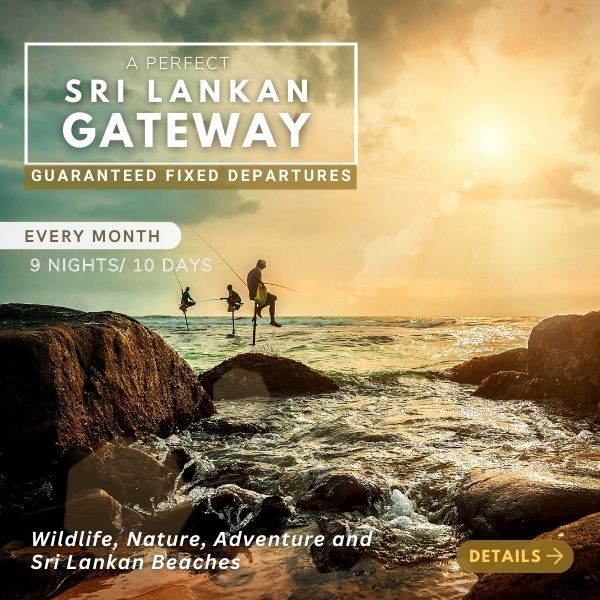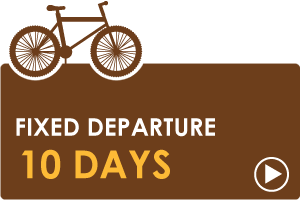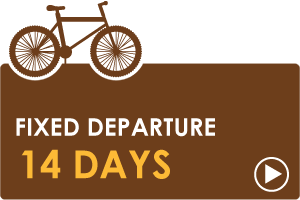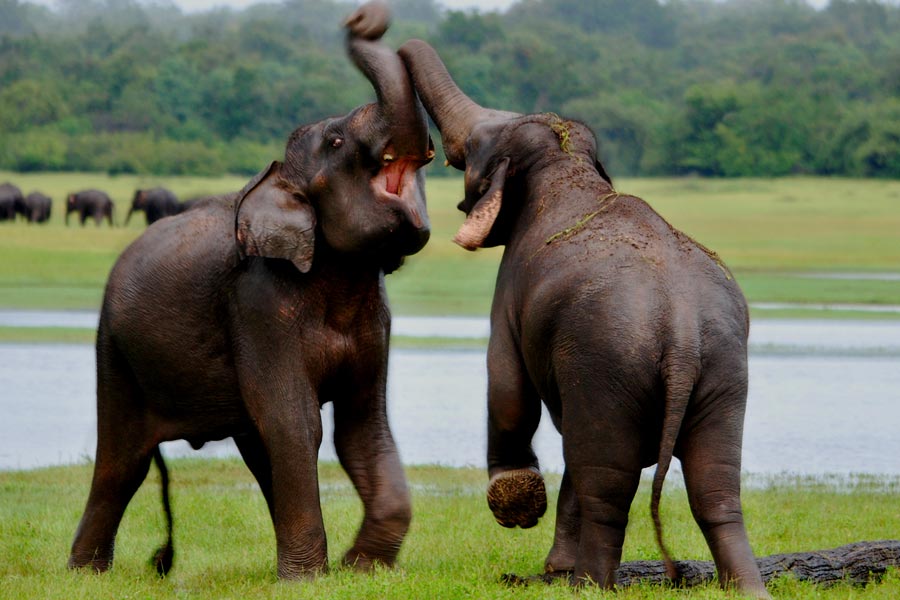
Kalawewa National Park
Declared a National Park in 2015, it embraces the imposing Kalãwewa and Balaluwewa water tanks, built by King Dhatusena in the 5th century. This Park of over 6000 hectares, is home to elephants but with a notable feature - the herd has a great concentration of tuskers; male elephants with tusks (which are ivory). Roughly only about seven percent of the male elephant population have them, making tuskers a magnificent sight to see.
Being in the dry zone, when the water levels recede from the tank beds, a lush grassland reveals itself – which is much sought after by the elephants. Resident herds and migratory herds from nearby jungles all congregate, to enjoy the grass. As the Park is only open during the dry season, the chances of such sightings are very promising. And this is in addition to seeing large flocks of open-billed storks.
The monsoons arrive around October – November and the grasslands disappear to give way to filled up reservoirs. While the resident elephant herds remain, the migratory elephants return. The Park’s beautiful kumbuk trees and vegetation complement the reservoirs, birdlife and pristine surroundings.
Vijithapura Rajamaha Viharaya (2km from Kala Wewa)
About 2 kilometres from Kalãwewa National Park is a temple thought to be built by King Dutugemunu and is believed to be the Vijithapura Rajamaha Viharaya.
Historians suggest that this location was important as a trading point during the early stages of the Anuradhapura Kingdom, connecting several trade routes. The temple has many old ruins which are believed to belong to the Anuradhapura Era. The highlight is the “Kadu ge Gala”. Legend has it that this granite stone was used by King Dutugemunu and his army to sharpen their swords prior to battle.
Avukana Buddha statue
A short distance away from the temple, stands the Avukana statue, near the town of Kekirawa in North Central Sri Lanka. The standing statue of Lord Buddha, carved out of a large granite rock face during the 5th century, stands at a height of more than 45 feet. It stands on a stone pedestal in the form of a lotus symbol and the symbolic gesture carved on the statue, called Mudra, is in the form of Ashiva Mudra which signifies giving or blessing. Intricate detail is given to the robe that clings to the statue.
Constructed during the reign of King Dhatusena, it may have been made as a result of a competition between a master and a pupil. Whatever the reason, the Avukana statue is one of the best examples of a standing statue constructed in ancient Sri Lanka.
Raswehera Buddha Statue
This statue is called Ras Vehera as well as Sasuruwa (or Sas-seruwa). The height of this statue is recorded at around 39 feet. Unlike the Avukana statue, this statue stands on a plain rectangular pedestal and the statue depicts the Abhaya Mudra, which signifies freedom from fear. But unlike the Avukana, this statue seems to be unfinished, with less attention given to the sculpture details in general.
The Bo Tree found here, is a sapling of the very first 32 saplings of the Sri Maha Bodhi in Anuradhapura and believed to be planted by King Devampiyathissa (250 – 210 BC). It is said that on the day the tree was planted the area was lit by colourful rays of light (know as ‘ras’). Thus the name ‘Ras Vehera’ was attached to this place. The tree is protected by a 10 feet wall of tightly packed stones, in four layers – a unique feature of ancient construction.
Day Safari at Kalawewa
There are 3 safari options available for the guest.
1. Morning Safari (6.00am)
2. Afternoon Safari (2.30pm)
3. Full day Safari
The safari would take place with an experienced guide in specially modified comfortable jeeps for unique safari experience. The tour could be more customized for guests for their preferences (Family safari, honeymoon safari, photography safari etc.).
Tour in brief
Initial meeting with the Eco Team crew and the safari guide, a brief of the tour will take place in the entrance to the Kalawewa Safari. For the morning half-day tour, the starting time will be at 6 a.m. while the afternoon tour begins at 2.30 p.m.
After entering the national park with your guide in a jeep, you will be able to spot several species of birds and other animals that have made their homes in this sanctuary. The guide will explain about the various interesting attributes as you will learn and enjoy about the flora and fauna of Kalawewa.
You will be taken through most of the Kalawewa National Park, covering the wetlands, grasslands, forest patches, etc. We will make longer stops at certain watering holes for unique photography opportunities.
Finishing the safari, either round 11 a.m. or around 6 p.m. you will be dropped at the park entrance.
Detailed Safari Itinerary
Date 01- Arrival in Kalãwewa
Schedule
· Arrival in Kalãwewa National Park
· Half Day Safari at Wasgamuwa National Park
· A Jeep tour on the muddy road and a boat tour in the lake
· Discovering the Park’s flora and fauna
· Dinner and overnight stay at the hotel
Date 02- Ancient Temples and Archeological Sites excursion
Schedule
· Breakfast at the Hotel
· Visit Vijithapura Rajamaha Viharaya
· Visit Avukana Buddha Statue and archeological sites nearby
· Visit Raswehera Buddha Statue
· Lunch at the hotel or at a suitable location along the trail
· Departure
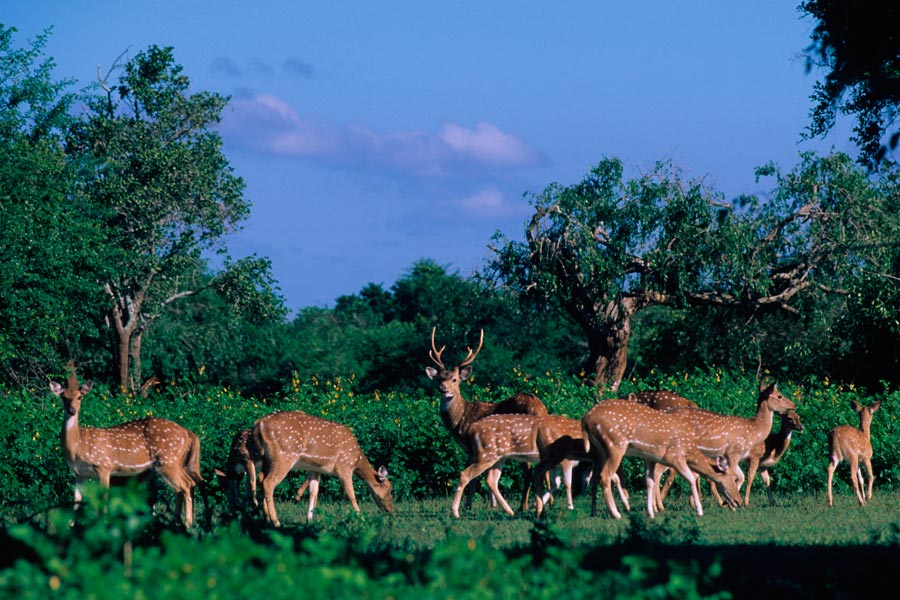
Somawathiya National Park
In the 2nd century BC, Queen Somawathie built the Somawathie dagoba (a mound-like structure which contains relics used as a place of worship), along the Eastern side of the Mahaweli River, hence giving name to this National Park.
The Park was originally designated as a wildlife sanctuary on the 9th of August 1966. The Somawathiya National Park is located 266 kms (165 miles) North East of Colombo. It lies in the deltaic flood plains of the Mahaweli River (the longest river in Sri Lanka) and it is here that the river forks into two branches: flowing into Koddiyar Bay and Verugal Oya, which eventually reaches the ocean.
Given the Park’s location, it is home to beautiful wetland ecosystems in the island, called ‘villus’ in the Mahaweli flood plains. These are natural inland water bodies characterised by aquatic plants and water-tolerant grasses. Somawathiya gives protection to a unique habitat of riverine villus and flood plains.
The ecological importance of Somawathiya is mainly due to the prevalence of elephants (Elephas maximus), which is estimated to be around 400 within the Park and its immediate environs, and also due to its abundant bird life. Mammals to watch out for include: the Golden Jackal (Canid aureus), Fishing Cat (Prionailurus viverrinus), Rusty-Spotted Cat (Felis rubiginosa), Leopard (Panthera pardus kotiya), Wild Boar (Sus scrofa), Sambar (Cervus unicolor), Water Buffalo (Bubalus bubalis), Porcupine (Hystrix indica) and the Black-Naped Hare (Lepus nigricollis).
Typically, the marshes of the flood plains have a rich and interesting avifauna. Around 75 migrant species are known to winter in the marshes of Somawathiya, including birds such as the Garganey (Anus querquedula), Marsh Sandpiper (Tringa stagnatilis), Pintail Snipe (Gallinago stenura) and the Whiskered Tern (Chlidonios hybridus). Resident birds include the Painted Stork
(Mycteria leucocephala) and Purple Coot (Porphyrio porphyrio) - among others.
Flora and fauna were once an abounding and vibrant feature in the National Park but increased human activity and exploitation has contributed to a decline. Deforestation, cattle grazing, and tobacco cultivation have also exacerbated damage to the Park’s ecology. Conservation, however, has begun in hope of reversing the situation.
Detailed Safari Itinerary
Date 01- Arrival in Somawathiya National Park
Schedule
· Arrival in Somawathiya
· Full Day Safari at Somawathiya National Park
· Dinner and overnight stay at hotel
Date 02- Departure
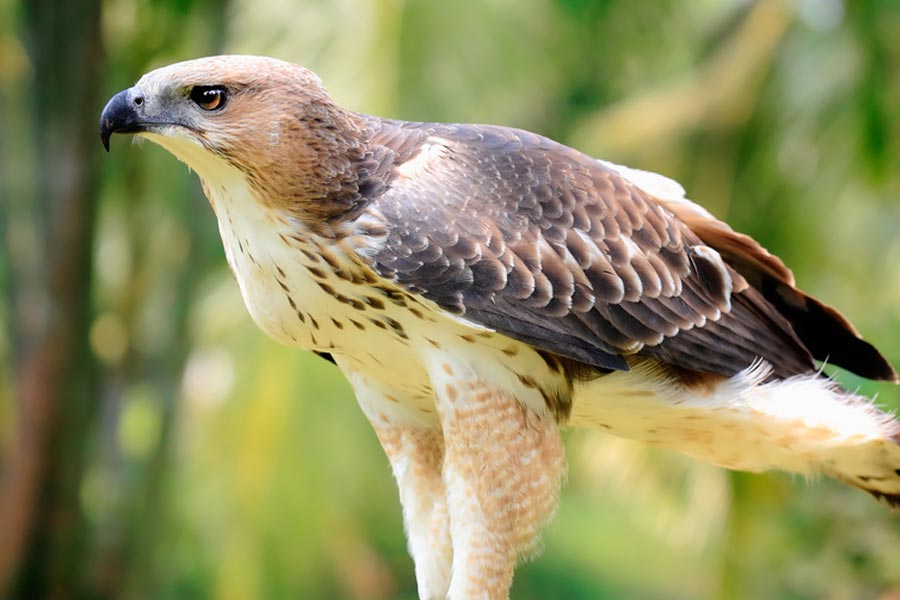
Angamedilla National Park
Angamedilla National Park is a relatively new national park in Sri Lanka and is situated 225 kilometres (140 miles) from Colombo, in Polonnaruwa. Originally, Angamedilla located within the Minneriya-Girithale Sanctuary – was declared a forest reserve on the12th of February 1988. Eventually, the region was designated as a National Park in June 2006.
This was done mainly to protect the Parakrama Samudraya (the Sea of Parakrama), a water reserve which benefits the flora and fauna of the area.
Built by King Parakrama Bahu in the 12th century, who focused a great deal on irrigation and agriculture during his kingship, the reservoir is just one of many that served to ensure that the country had sufficient rice harvests, making Sri Lanka at the time, “the Granary of the Orient”. In fact, minor archaeological remains of King Parakrama Bahu’s era can be found scattered throughout the Park.
Similarly, Angamedilla also secures the catchment areas of the Minneriya and Girithale irrigation tanks and the water sources in Sudu Kanda (White Hill) located on the southern border of the Park - for the benefit of wildlife and habitats of nearby forests. A picturesque mountain range stretches across the Park from Girithale to Minneriya, which receives more rainfall than the plains. Yet during the drought period the Park gets very dry. This mix of wet and dry climate means that the Park boasts of both wet zone and dry zone plants.
The vegetation of the park is predominantly dry evergreen forests. Diospyros Eebenum is one of the dominant plant species in the forest. Manilkara Hexandra (Palu), Cholorocylon Swetenia (Burutha), Vitex Pinnata (Milla), and Adina Cordifolia (Kolon) are common in natural vegetation.
When it comes to wildlife: Sri Lankan Elephant, Sri Lankan Sambar Deer, Indian Muntjac, Sri Lankan Axis Deer, Water Buffalo, Wild Boar, and Peafowl are commonly sighted within the Park. However, Sri Lanka Leopard, Sloth Bear, Grizzled Giant Squirrel aAnd Sri Lanka Junglefowl are not as easy to catch sight of The primate species Red Slender Loris, Tufted Gray Langur, and Purple-Faced Langur are also occasionally seen.
Detailed Safari Itinerary
Date 01 - Arrival in Angamedilla
Schedule (3 - 4 hours jeep safari)
· Arrival in Angamedilla
· Half Day Safari at Angamedilla National Park
· Lunch at the hotel
· Departure
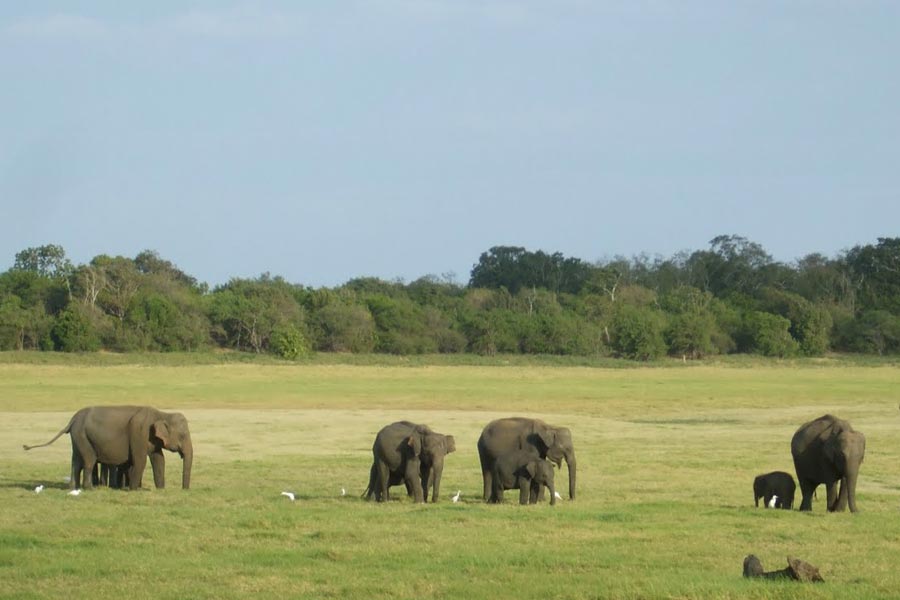
Flood Plains National Park
Flood Plains National Park is the only flood plain national park in Sri Lanka situated 222 kilometres (138 miles) North East of Colombo. The area was declared a national park on the 7th of August 1984. A look at a map shows the Park almost strategically located, with the Somawathiya and Wasgamuwa National Parks on its North Eastern and South Western borders respectively. The Angammedilla National Park is found to the West, some distance from the Flood Plains.
The Mahaweli River runs right through the Park, giving rise to rich flood plains alongside the river. There are also a number of natural, swampy water bodies called ‘villus’; home to diverse aquatic plants and water-tolerant grass (saturated soil and hindered tree growth are favourable for their growth). During the North East monsoon (October to January) the rains causes flooding, while during the rest of the year, the dry season prevails. The area also experiences strong seasonal windy periods. All these factors result in the Park comprising diverse ecological zones, consisting of: river channels, riverine marshes, villus, seasonally flooded grasslands, and swamp forests. In fact, there are 231 plant species recorded to date and trees such as kumbuk (Terminalia arjuna) and rattan cane (Calamus rotang).
More importantly, the National Park is considered an elephant corridor for the elephants to migrate between Wasgamuwa and Somawathiya National Parks while also serving as a rich feeding ground for them. The abundance of water and grasslands makes it an important habitat for the elephants.
Interestingly, a sub-species of the Sri Lankan Elephant (Elephas maximus), the Vil Aliya or Marsh Elephant (Elephas Maximus Vil Aliya) which has adapted to the marshy environment of the flood plains, exemplifies the unique biodiversity of the Park. Other residents of the Park include: the Fishing Cat, Jungle Cat Rusty-Spotted Cat Jackal, Wild Boar, Indian Muntjac, Sambar, Spotted Deer and Water Buffalo. The European Otter, Sri Lankan Spotted Chevrotain, and the Sri Lankan Leopard have also been sighted here. Notably, the Flood Plains National Park is one of the recorded habitats of Grey Slender Loris.
The National Park is also home particularly to migrant birds, which enriches the diversity of its avifauna. It has been estimated that around 75 species winter in the swamps here. Frequently seen are: the Marsh Sandpiper, Wood Sandpiper, Asiatic Golden Plover, Garganey, Osprey and the Black-tailed Godwit. Common residents are the Eastern Large Egret, Cattle Egret, Painted Stork, Pond Heron, Eastern Grey Heron, Pheasant-tailed Jacana, Purple Coot and the Indian Darter amongst others.
On a historical note, there are several rock engravings dating from the 2nd to the 7th centuries and the Dimbulagala Rock (8kms from the Park) with several pre-historic caves. To the west is Vijithapura, a fortress that witnessed bloody battles in ancient times.
Detailed Safari Itinerary
Date 01- Arrival in Flood Plains
Schedule
· Arrival in Flood Plains
· Full Day Safari at Flood Plains National Park
· Dinner and overnight stay at hotel
Day 02- Departure
Schedule
· Breakfast at the hotel
· Departure before 11 a.m.
